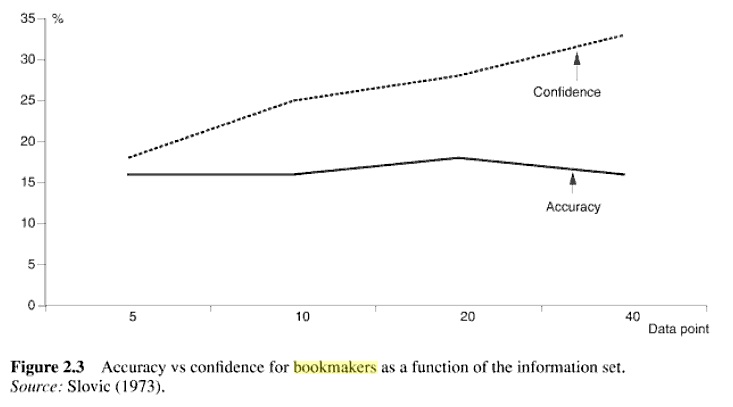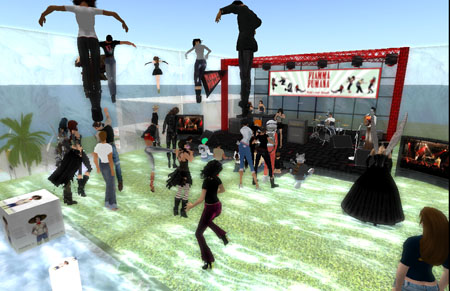Choco e Fredrik hanno fatto un widget per fare una specie di scherzoso sondaggio tra immagini alternative. Funziona cliccando sulla foto che preferite; il widget sostituisce la foto scartata con un’altra, e vi propone una nuova scelta. Qui sotto ho fatto una prova… purtroppo il soggetto sono io… portate pazienza… il prossimo lo faccio su Jenna Jameson 😉
Category Archives: digital life
Le notizie sono tossiche
Pensate di vivere in un paese sicuro? I reati stanno aumentando o diminuendo? Lavoce.info – che Dio ce la conservi – pubblica questo grafico, tratto da una indagine promossa dalla Fondazione Unipolis e curata da Ilvo Diamanti.

L’attenzione data dai media ai reati non è per nulla correlata con la quantità di reati effettivamente connessi. Già questo non depone esattamente a favore del famoso giornalismo professionale. Ma c’è di più: considerate quest’altro grafico, che descrive i risultati di un esperimento condotto dallo psicologo Paul Slovic sui bookmakers che trattano scommesse sulle corse dei cavalli. Slovic ha raccolto informazioni statistiche riguardo ai cavalli che avrebbero corso una certa serie di gare; disponeva, per ciascun cavallo, di 88 variabili. Ha rivelato ai bookmakers i dati sulle 5 variabili che ritenevano più importanti, chiedendo poi loro di fare previsioni sull’esito di queste gare e di valutare quanto, secondo loro, queste previsioni fossero affidabili. Poi ha aggiunto di volta in volta nuove variabili, sempre chiedendo ai bookmakers nuove previsioni e nuove valutazioni dell’affidabilità delle previsioni stesse.

Come vedete, man mano che aumentano le informazioni disponibili, la capacità dei bookmakers di fare previsioni azzeccate sulle corse non migliora (e rimane attestata su valori bassi, intorno al 15%). Pare che tutta l’informazione rilevante sia concentrata nelle prime 5 variabili! In compenso, la loro fiducia nelle proprie previsioni (sbagliate) aumenta molto. Conclusione:
1. voi non sapete se i reati stiano aumentando o diminuendo. Ammettiamolo, è tutto un “cara signora, non si può più andare in giro” e un “mio cuggino (con due g) ha un amica che…”.
2. leggere i giornali o guardare le TV non vi darà nessuna informazione addizionale. Aumenterà invece la vostra illusione di sapere una cosa che invece non sapete, rendendovi molto sicuri di voi stessi nell’intervenire nei discorsi da bar. Se volete capire quanto è sicuro il territorio in cui vivete, le ricostruzioni della strage di Erba o del delitto di Perugia sono inutili e dannose. Cercatevi piuttosto in rete le serie storiche sui reati, con un po’ di pazienza si trovano. Qui, per esempio, c’è una ricerca che ricostruisce l’andamento dei reati in tutte le province dell’Emilia Romagna dal 1984 al 2006.
Io una volta leggevo due quotidiani al giorno. Adesso ne leggo al massimo due alla settimana. Non ho la TV. Non ascolto la radio. Leggo qualche blog, in genere molto specializzati. Non mi sembra di capire meno il mondo in cui vivo: ne capivo poco prima, ne capisco poco anche adesso. I discorsi da bar, ecco, quelli sono diminuiti. Molto.
How to play live in Second Life

Once we had dealt with the technical issues both inworld (build acceptable avatars, find instruments and animations, build the stage…) and in RL (organize the signal channel from our RL instruments to the streaming server), yesterday’s concert in Second Life was emotional and fun. We “felt” the audience, it felt “like being there”. The vibe is more or less that of a live-on-the-radio performance, maybe more fun because you can actually see the audience and interact with them. It was a success, too: we had a full sim and everyone was happy with the experience.
I thought I’d share here the solution we found to do a “real” live show (not just streaming of prerecorded audio files, as most people do in SL). Here it is:
- the band gathered in a recording studio (Casamedusa in Milan), The signal from the studio main board was routed to a USB audio interface connected to a PC on which WinAmp and Shoutcast DSP (a WinAmp plugin for audio streaming) had been installed.
- we bought time on a SL-specialized streaming service based on Shoutcast. You pay according to time and number of people served: we bought 24 hours for 50 avatars for 700 Lindens. When you pay, the service gives you the config parameters for both Shoutcast DSP and the SL land (which needs to read the music stream from that server’s feed). The sound quality was found to be quite good.
- our avatars were steered by other people, leaving us free to concentrate on the music. We, however, had chosen animations, instruments etc.
- In the performance room, standing net to us, we set up a laptop logged into SL (via the studio wi-fi) as a “spectator” avatar, allowing us to see the audience inworld and interact with it. (“Hey, you really are raving like there’s no tomorrow! Let’s all fly around the stage!”). The ADSL can take the audio streaming plus one logged-in avatar no problem.
- in the control room of the studio there was Ginevra with another laptop (this one logged onto the net via UMTS, in order not to burden the bandwidth) logged onto SL with our vocalist Roberta’s avatar. Besides animating it, she was charged with monitoring the inworld audio and reporting any problems to the engineer.
What I think we should try and improve is interacting with the audience. We’d need a much bigger screen in the studio to have a better feeling of what happens inworld; also we need to learn to interact in the presence of significant streaming latency. Setting DSP to the same parameters as the server (128 kps, 44.1 KHz, mono) we had about 15 seconds latency: that is to say, a note we played in RL would be heard inworld 15 secs later. This means that we could not communicate by talking and responding, but only trying to steer the emotion f the performance: warmup first, then full power on, then slow at the very end.
Roberta was great in mixing SL lingo and live concert ritual (“Are you having find, my dear newbies? LOL!”) and the audience really dug it. Except at the end, when we played a solemn, atmospheric Bella Ciao and everyone was still running wild dancing anims. We all need to learn…
Francesco, Velas, Emiliano, Junikiro, Joey, Rosa, Ginevra, Eliver, Tonino, Asian e tutti i volontari della Festa.